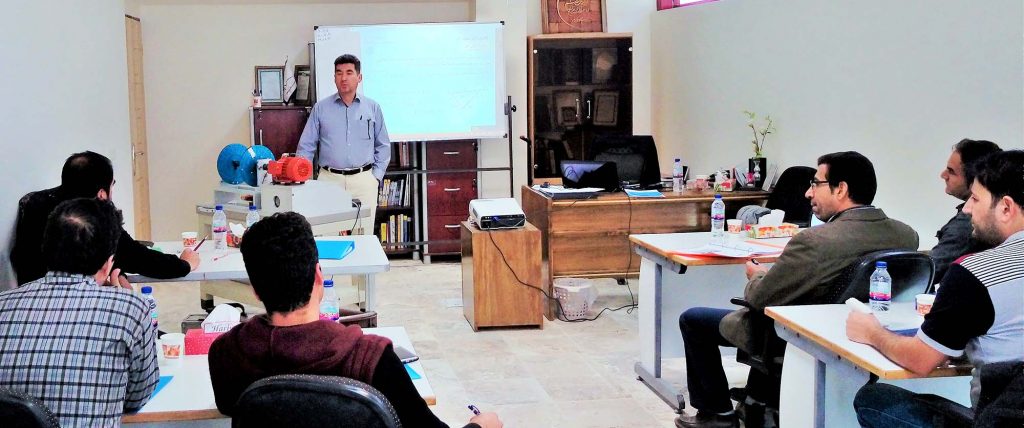
vibration training
Vibration analysis technologies are constantly developing and improving, and in order to be up-to-date and make optimal use of condition monitoring, troubleshooting, balance and alignment systems, experts involved with rotating machines must be constantly updated with the latest vibration analysis training. Get to know the technologies. The experienced experts of Tavator Sepahan Engineering Company, with more than 30 years of practical experience, conduct various vibration analysis training courses in a centralized manner at the site of Tavator Sepahan Company, as well as at the customer’s request.
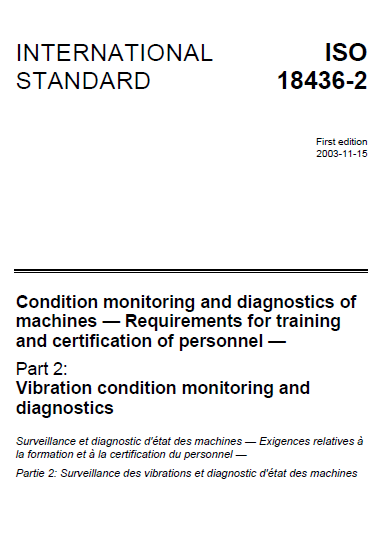
What is the ISO 18436-2 standard?
ISO 2-18436 standard under the title:
“Monitoring the condition and troubleshooting of machines – regulations for the training and evaluation of experts – the second part, monitoring the condition and diagnosing vibrations”
In 2003, it was published to standardize the specialized levels of vibration analysis and the way of holding tests of these levels, and currently all the reputable institutions of vibration analysis training use this standard for leveling the expertise of vibration analysis.
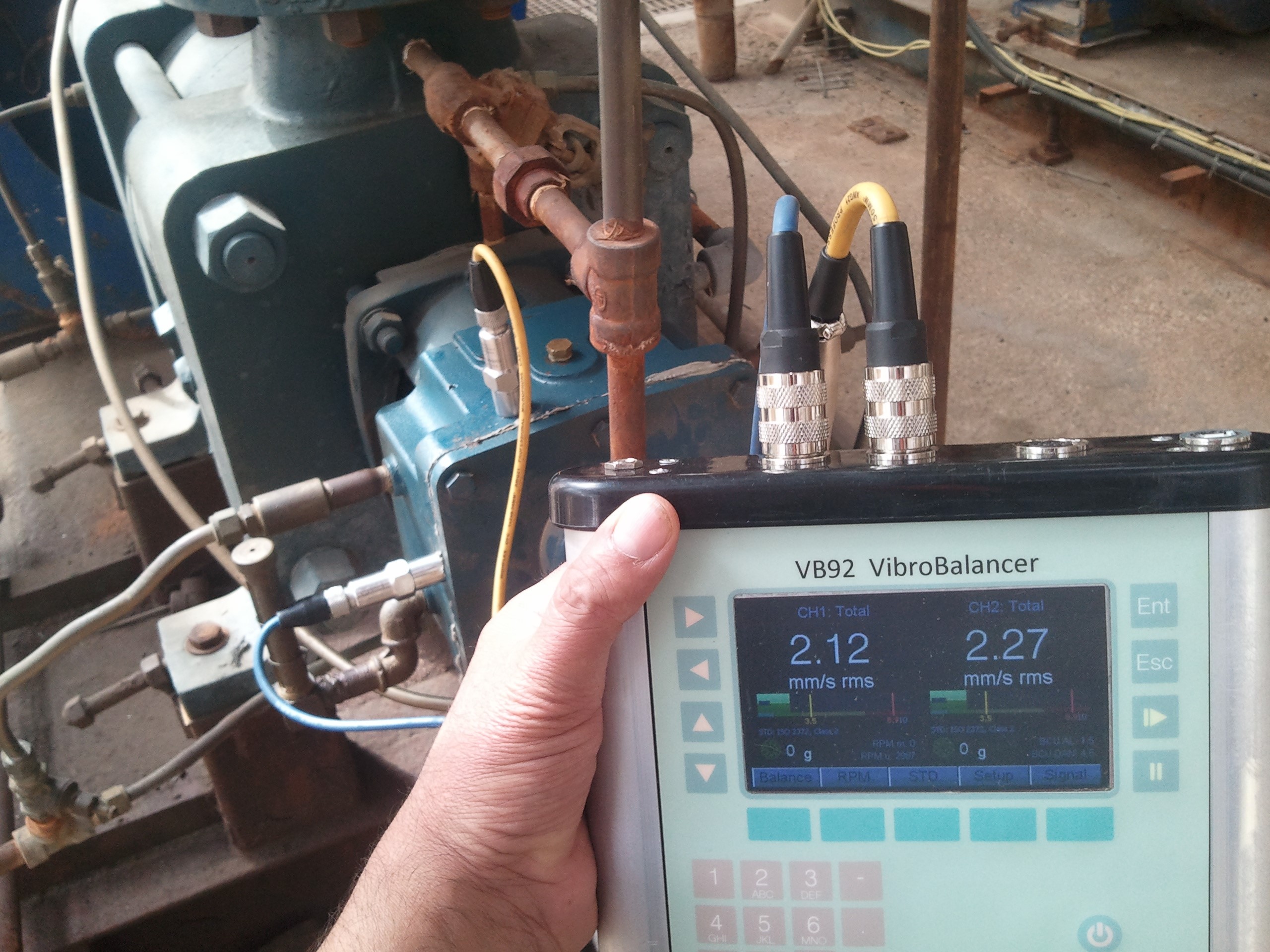
Expert with level 1 approval (Category 1)
These experts are measurement operators, so they should be familiar with the basic principles of mechanical vibrations to the extent that they know the measurement units and parameters of condition monitoring. Must be able to reliably perform predefined measurements on single channel analyzers, evaluate measured values against predefined warning limits, be able to identify errors that occur in these measurements, report give their observations of the general condition of the car and finally transfer the measured data to the computer.
Title headings:
Net activities
Status monitoring
Principles of vibrations
data collection
signal processing
Vibration analysis
diagnosis
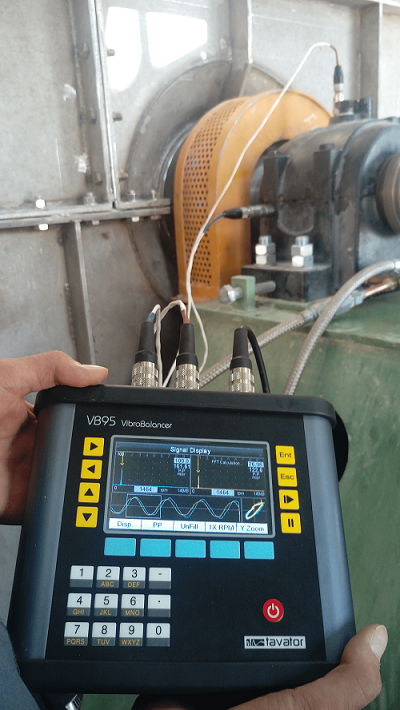
Expert with level 2 certification (Category 2)
These experts are primary analysts, so at first they should include all level 1 specializations of vibration analysis training. In addition, they must be able to define routine data acquisitions, i.e., be able to set up data acquisition and analysis related to basic signal analysis, and perform additional measurements when unusual conditions arise, perform single-channel impact testing, test results interpret and evaluate according to the relevant specifications and standards. Identify common defects and recommend early corrective solutions. These experts should have knowledge and efficiency of other recommended condition monitoring techniques to be able to evaluate the problems arising from routine condition monitoring.
Title headings:
Principles of vibrations
Signal recognition
signal processing
Waveform analysis
data collection
Analysis steps
Troubleshoot and correct imbalance
Misalignment troubleshooting
Fault finding
Belt troubleshooting
Troubleshooting bearings
Troubleshooting of electric motors
Troubleshooting box dispensers
Troubleshooting pumps, fans, compressors
Natural frequency and resonance
Set alerts
acceptance test
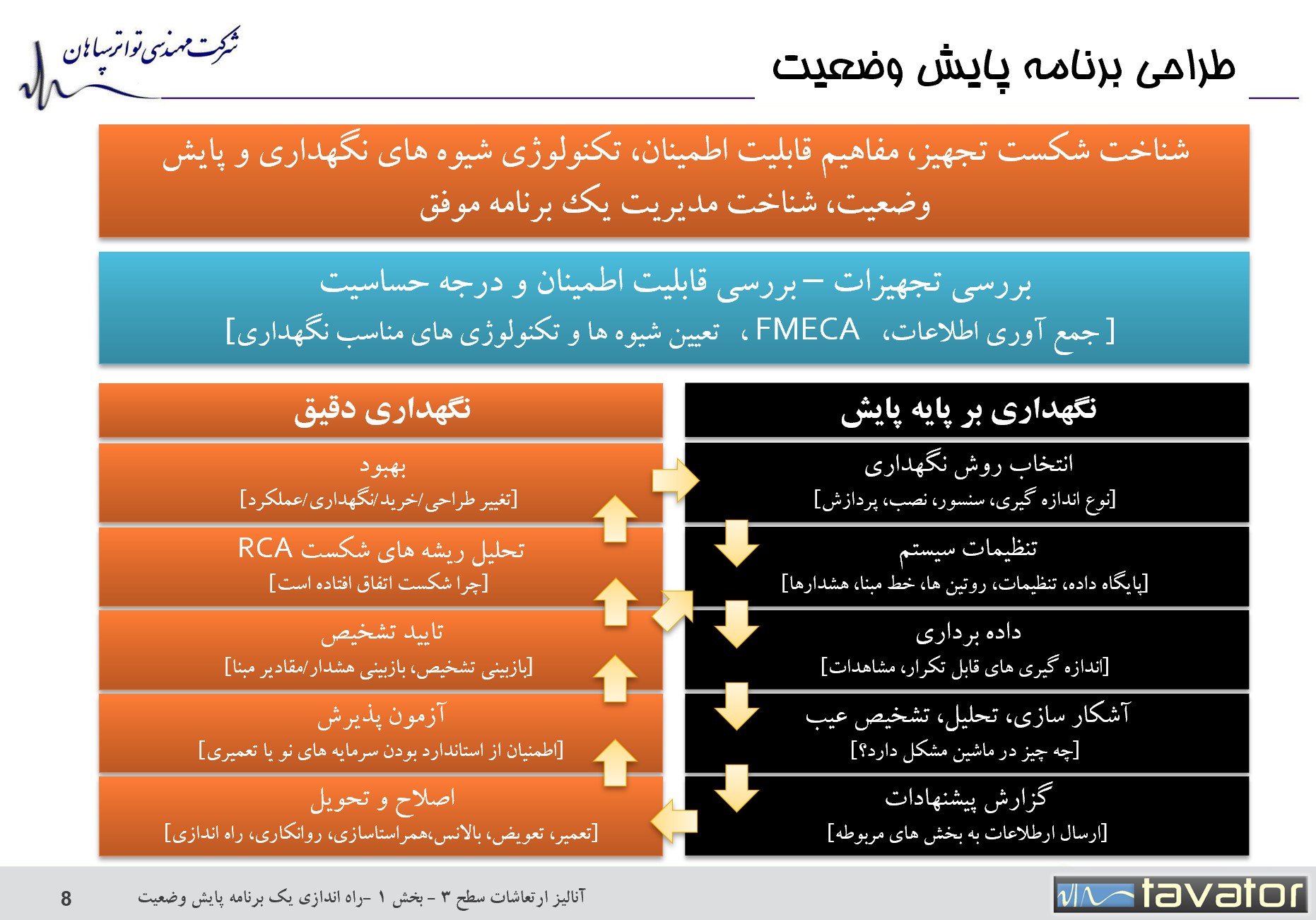
Expert with level 3 certification (Category 3)
These experts are expert analysts, so at first they should have all the knowledge and skills of level 2 and be able to train and provide technical knowledge to lower level experts. The level 3 expert must have a deep understanding of the principles and techniques of machine vibration analysis to the extent that he knows the frequency spectrum, time signal, orbit, basic ODS practical deformation and acceleration involute in a single channel measurement. They must be competent to design, direct, and manage a routine condition monitoring program, be able to direct non-routine troubleshooting, and understand and operate other condition monitoring techniques to solve problems that cannot be solved by vibration condition monitoring. to study and evaluate Kurdish. These experts should be able to direct corrective operations such as performing balancing operations and have the competence to recommend limiting or stopping the work of the machine.
Title headings:
Status monitoring
signal processing
Waveform analysis
Fuzzy analysis
System dynamics
Resonance and natural frequency
The practical transformation of the ODS structure
Modal Analysis
Correction of resonance problems
Roller element bearings
Journal bearings
Electric motors
Gearbox
Pump, fan, compressor
balance
alignment
An overview of the methods of fixing vibration defects
Effective implementation of a condition monitoring program
Equipment acceptance test
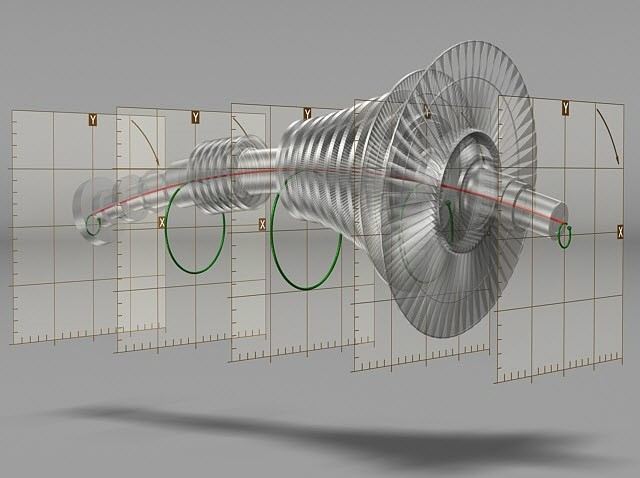
Expert with level 4 certification (Category 4)
These experts are expert analysts, so they must have deep knowledge, skill and experience, and use the theory of mechanical vibrations, signal analysis, multi-channel spectral analysis, rotor dynamics, gas pulsation dynamics, isolation and damping techniques, to find out the defects of the machines. Diagnose and provide their correction methods. These experts should be able to obtain natural frequencies, mode shapes, damping, and practical mode shapes by applying parameter identification techniques. They should be able to navigate the two-plane balance and should be able to make recommendations for modifying the installation of machines by methods such as design modification, flexible installation, and foundation redesign. And finally, they must be able to interpret the codes and standards that are published in the field of vibration analysis.
Reference
books
download software
Current seminars
Scientific and research
town of Isfahan
Vibration Training
Guide to training courses
educational calendar
services
condition monitoring
Field Balancing
Shop Balancing
Machinery Alignment
Vibration Labratoary
products
VB95 vibro balancer
Payande software
VM4-96 system
VM4 monitor
VM4-96-p monitor
monitoring software
cabin balance 93
ROD
CAL-401
Stroboscope
BNC box
conectors and cable
![]()


